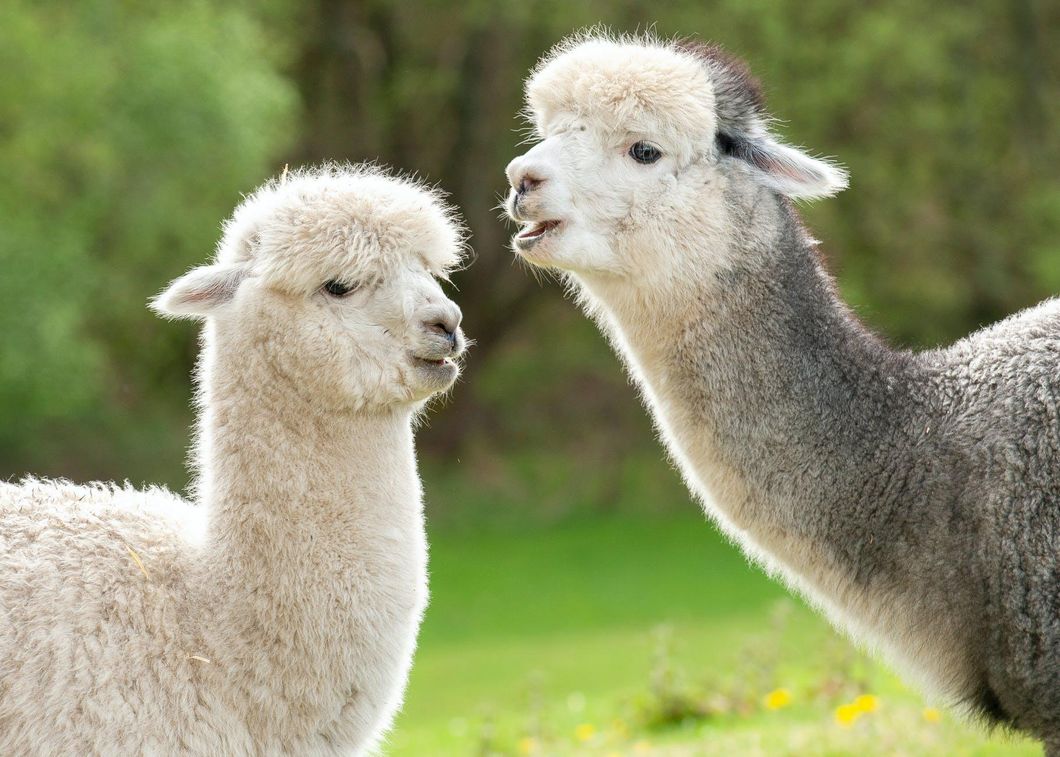Raising alpacas is always a fun-filled activity. With floppy tufts, slender neck, innocent eye, The adorable camelidae family mammal, Alpacas have shaggy hairs that are used for fleece production. But from fur skin to cutest look, there is a lot more to know about them. In this post, we are going to discuss all the fun facts and things you deserve to know about your favorite farm animal.
Their origin is ancient:
This common ancestor of camelids is known to have originated in North America and later migrated to South America. About 6000 years ago, people in Incas started domestication of the species. Since then, Alpacas are used for fuel, fertilization and garments.
They came in two breeds:
There are two types of alpacas and their looks will vary based on their breed type: Hyacaya and Suri. The Huacaya alpaca has more thinker and fluffy skin, especially wavy at the crimp. And Suri's have long wavy hairs on their back. The difference in density, fineness, length and softness of fleece are important characteristics that define the two breeds.
Alpaca can successfully cross-breed:
Though smaller than their close cousin llamas, both the species can crossbreed. The alpaca-llamas crossbreed, Huarizo ( also known as Llalpacas) is a cross mating between male llamas and female alpacas. The mating produces species smaller than llamas but with a good fleece quality.
They are growing in number:
As the alpaca fleece takes root in the global market, Alpacas too are growing in numbers. The United States, Canada and Australia have the highest number of registered Alpacas. Though we don't have unified data for the total number of alpacas worldwide, there is no doubt their raising for fleece is booming.
Alpacas are great therapy animal:
Alpacas like dogs are fantastic animals for putting people at ease and giving them emotional support. While patients may expect dogs and cats at rehabs centres, alpacas are being used to boost the patient spirit.
Younger ones are known as "Cria":
The birth of a baby in alpacas takes about 11 months. And as a result of this slow reproduction, females deliver one baby at a time known as Cria. Weighing approx 6 to 8 kg, cria can stand up on their feet so early. However, they stay with their mothers until they are weaned after 6 to 8 month.
Reproductive age for male and female:
They live up to the age of 20 years. But the reproductive age for female alpacas (Hembra) starts between 12 to 15 month while male alpacas (called machos) are ready to mate as they reach the age of 30 to 36 months. This is the age range when farmers start putting "alpacas for sale".
Fine and lustrous fleece:
Used in clothing, alpaca fleece is much softer than cashmere or angora, smoother than silk, softer than cotton, warm and lightweight than sheep's wool. known for non-itchy texture, items woven with alpaca are easier to process and hypoallergenic.
Water repellent and Flame resistant:
It has been observed that alpaca fibres are water-resistant and successfully wicks water away from the clothes.
Moreover, they are also more flame resistant than any other synthetic fibre. Such that they have a lower tendency to meltdown on the skin in case of fire.
They are raised for fine colour fleece:
The fur or fibre of alpacas come in 22 natural colors. However, they may have a mix of two, primary or secondary colors within their fibre. White is a popular color in alpacas fleece where they are tinted to produce a variety of different colors.
Use the same restroom to pop:
The animal uses the same spot to dung pile and mark their territory. This interesting behavior of alpacas in using a communal dung pile is the reason they are often kept as a pet and domesticated widely. Meanwhile, these pop piles are excellent manure used for plants.
Hum, "Orgle" and "Screech" in different situation:
Alpacas produce a humming sound commonly while they talk to their babies, want something and express feelings to each other. But when in danger or annoyed, they produce screeching, unhappy sounds as an alarm for the potential threat. The male alpaca will make loud and unpleasant orgling sounds while mating and making it known to their community.








































